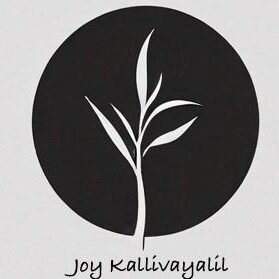#history
#books
The Men Who Killed Gandhi,
Manohar Malgaokar.
Let’s Kill Gandhi,
Tushar Gandhi.
The Assassination of
Mahatma Gandhi.
There were a total of six attempts on Gandhij’s life.
The final two, in January 1948, involved a small group of far-right Hindu nationalists.
Three members of this group belonged to the Hindu Mahasabha – Nathuram Godse, Narayan Apte and Digambar Badge. Two others, Madanlal Pahwa and Vishnu Karkare, were refugees displaced during the Partition of the Punjab.
The first attempt by Godse and his accomplices was on January 20, 1948, in New Delhi. Pahwa set off a bomb during Gandhiji’s prayer meeting, but the attempt failed. The police caught Pahwa even as the other conspirators ran away.
Questioning revealed that Pahwa was no lone wolf – that the attempt was part of an organised conspiracy.
It was also revealed that there was a connection with Savarkar – Pahwa boasted that he had met the Hindu Mahasabha leader just a few days back.
The Bombay Police asked Morarji Desai, then the home minister of Bombay, if he could arrest Savarkar.
“Are you mad?” said Desai, refusing. “Do you think I want this whole province to go up in smoke?”
Despite capturing Pahwa, and learning about plans to assassinate Gandhi, the police in Delhi displayed incredible ineptitude.
Ten days after the first assassination attempt, Godse fired three shots into Mahatma Gandhi at point-blank range, killing him immediately. Almost immediately, in Bombay, Savarkar was placed under house arrest.
As the trial for Gandhi’s murder commenced, Badge turned approver.
Savarkar claimed that he had been unwell for nearly a year before the assassination, and had not met Godse or Apte during that time. But Badge contradicted this statement. Badge claimed that Savarkar met both Godse and Apte on January 14, as well as on January 17 that year.
On January 14, Godse and Apte met Savarkar with the weapons that were to be used in the assassination, claimed Badge. The next day, Apte told Badge that Gandhi had to be killed and that Savarkar had assigned him to the task.
On January 17, Savarkar met Apte and Godse again. According to Badge, Savarkar told Apte and Godse in Marathi, “Yashasvi houn ya” (Be successful and come back).
On leaving, Apte told Badge: “Gandhiji’s hundred years are over – there is no doubt that their work would be successfully finished.”
This was damning for Savarkar – made all the more grim, by the fact that Badge was seen by the court to be a sterling witness.
The judge wrote:
“There was thus an ample opportunity to observe his demeanour and the manner of his giving evidence. He gave his version of the facts in a direct and straightforward manner. He did not evade cross-examination or attempt to evade or fence with any question. It would not have been possible for anyone to have given evidence so unfalteringly stretching over such a long period and with such particularity in regard to the facts which had never taken place. It is difficult to conceive of anyone memorising so long and so detailed a story if altogether without foundation….”
However, there was a legal hitch. While Badge’s testimony was flawless, it did not have any corroboration.
While the lack of evidence had let off Savarkar, the passage of time would prove both Sardar Patel and Nagarvala right.
In 1969, a judicial commission was set up under Justice Jeevan Lal Kapur, to look at fresh evidence connected to Gandhi’s assassination. This unearthed the crucial corroboration to Badge’s testimony linking Savarkar to the conspiracy.
Appa Ramchandra Kasar, Savarkar’s bodyguard, confirmed that Savarkar’s claim that he had not met Godse and Apte before Gandhi’s assassination was false. The Kapur Commission report on Kasar’s testimony read:
“On or about 13th or 14th January (1948), Karkare came to Savarkar with a Punjabi youth and they had an interview with Savarkar for about 15 or 20 minutes. On or about 15th or 16th, Apte and Godse had an interview with Savarkar at 9-30 p.m. After about a week or so, may be 23rd or 24th January, Apte and Godse again came to Savarkar and had a talk with him at about 10 or 10-30 a.m. for about half an hour….”
Moreover, these visits were corroborated again by Gajanan Vishnu Damle, Savarkar’s secretary.
– Joy Kallivayalil.


